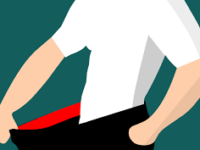“No, Mya. I’m not going to the doctor. I don’t need to. I’m fine,” my mother insisted, mitigating my concerns through her inflamed vocal cords. I watched as she grimaced in pain, trying to breathe through what seemed to be one nostril, her voice taking the comical nasal tone of a kazoo.
As I began to release a deep sigh, it was abruptly cut off by the shrill whistle of the kettle in the air. Rushing toward the stove, the steam swirled around me as I poured the boiling water over the ginger and lemon. Here, I hoped that this cup of tea would provide my mother with the healing and comfort that the Western healthcare system failed to provide.
Growing up in a Black Caribbean household, this scenario proved to be a regular occurrence. Like many in our community, whenever my mother succumbs to illness, her first line of defense is not found in the aisles of a pharmacy, nor is it found in a cold, sterile hospital room. Instead, she reaches for the herbs and ailments passed down through generations of her Caribbean heritage.
This medical practice, known as complementary and alternative medicine (CAM), is a source of comfort, connection, and personalization. It’s an approach that focuses on the entirety of the patient. Conversely, the practice of Western medicine often produces impersonal interactions and standardized interventions, frequently leaving accessibility and trust in question. It’s a sentiment echoed throughout many marginalized groups — notably the African American community.
As the historic atrocities committed against African Americans continue to contribute to present-day injustices of the Black community, the reliance on CAM, also known as traditional medicine, proves to be a necessity and a choice rooted in cultural identity. Needless to say, there is a great shift where the prevalent use of conventional medicine is decreased and replaced with CAM. Considering these factors, how can our healthcare system evolve to better address the needs and preferences of marginalized communities?
“This medical practice, known as complementary and alternative medicine (CAM), is a source of comfort, connection, and personalization. It’s an approach that focuses on the entirety of the patient. “
While recognizing the strengths of conventional medicine is essential, it is equally important to acknowledge its significant limitations. The suggestion is not that herbal medicine become ‘pharmaceuticalized’ nor that alternative interventions should replace conventional medicine. However, as a daughter of a Black Caribbean woman, there is a sense of urgency to integrate the two healthcare modalities. With this integration, we can potentially enhance personalized precision medicine and health equity for marginalized groups, specifically African Americans.
To effectively integrate practices of CAM into modern medical practices and enhance precision medicine and health equity for Black Americans, we must first come to terms with the often overlooked, and sometimes blatantly ignored, realities of the health disparities faced by African Americans.
Historical and ongoing discriminatory medical events, such as the infamous Tuskegee Syphilis Study, have contributed to the persistent health disparities in the Black community. These atrocities, along with social injustices, have worsened inequities in healthcare access, insurance, and resources. Despite efforts to address these disparities, the lasting impact of structural racism continues to perpetuate health inequities in the lives of African Americans. Perhaps a true understanding of the medical preferences and practices of the Black community can increase trust between the African American community and medical field.
CAM has potential for a global impact. For insight, research in Paraguay shows that despite the government’s efforts to increase health access and coverage, equitable distribution remains a challenge, forcing the population to use traditional medicine to maintain their health. Given the current state of health equity for African Americans in the U.S., it is plausible to draw parallels between the two circumstances.
Limited access to healthcare forces marginalized populations to seek alternative medical practices. It also forces those to forego treatment altogether as my mother has. Living in this drought of health equity, CAM has become a familiar form of medical care for the Black community. Integrating this form of care will add to the inclusive nature of our current healthcare system. Furthermore, this familiar practice will strengthen the trust between the Black community and medical professionals.
Additionally, it has become clear that health and wellness encompasses more than just the physical. Health is multifaceted, considering each individual’s lifestyle better provides care. This holistic approach is a core value of CAM, which aligns with the principles of personalized precision medicine. CAM also has the potential to aid in the nutritional management of non-communicable diseases and serve as an affordable source of medicine — yet another problem faced by African Americans.
Well, if there are so many benefits to CAM, especially with its role in health justice, then why haven’t we implemented integration? It’s certainly a question worth asking. However, the pushback for such integration stems from the fact that traditional medicine often provokes skepticism.
Considering CAM’s countless benefits and role in health justice, its integration faces pushback due to skepticism. Various discussions about CAM often frame the medical practice negatively with a negligence for cultural sensitivity, overall reflecting a disregard for the socio-environmental systemic challenges faced by marginalized communities. This framing preserves the stigma that traditional medicine is founded on a system of superstitions, thus undermining the legitimacy of CAM in modern medicine. As a Black and Caribbean Hispanic involved in molecular research and healthcare, I believe that the absence of molecular biological evidence for CAM does not serve as an attestation that the practice is invalid. As evidenced, many pharmacological interventions of Western medicine began without scientific evidence. Perhaps the pharmaceutical, morphine — used for surgical analgesia, comes to mind?
Through a collaborative and patient-centered approach, CAM can be effectively integrated into conventional medicine. This integration involves acknowledging the value of CAM practices for the upholding of holistic well-being as well as personalized precision medicine. Modern healthcare systems can incorporate CAM through the integration of CAM education into medical training programs. Conducting more clinical-based trials on the effects of CAM can be beneficial, along with the collaboration of Western healthcare professionals and other naturopathic professionals from around the world.
For my mother, and many others in our community, these remedies are more than just a means to heal; they are a connection to our culture, a reminder of resilience, and a source of comfort and familiarity. The trust placed in these practices is not merely blind faith; it has been earned through generations of successful healing and the tangible benefits they bring to our lives. The case of integrating these two medical practices is not because both are perfect, but because they are both imperfect and together will better serve the community.
- Prevention Science (2023). DOI: 10.1007/s11121-023-01622-1
- Caldasia (2020). JSTOR: 42(2):263-277
- The Canadian Veterinary Journal (2017). PMCID: PMC5508938
- Focus on Alternative and Complementary Therapies (2011). DOI: 10.1111/j.2042-7166.2011.01120.x
- Journal of Health Care for the Poor and Underserved (2010). DOI: 10.1353/hpu.0.0323






